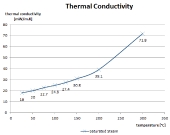
 13
13




 5
5




The best place to pray for a good crop is at the end of a hoe!
 6
6




 4
4




Christopher Shepherd wrote:I like the idea. Using the same space for electric and heat saves space. The biggest problem I have in my area is freezing in the winter. It needs to be set so it completely drains or filled with antifreeze. An antifreeze loop that only kicked on at a warm temp would work with a water to water heat exchanger. It sure would be neat if you got a system to work.
Glenn Herbert wrote:Excellent idea! I don't know how practical it would be in real life, but worth exploring. I would try a drainback system, where the water all sits inside the house until the collector is warm enough to give net heating. Then a pump circulates water through the collector and back to storage. No water is exposed to freezing temperatures.
 5
5




 3
3




Michael Qulek wrote:I've seen reports from other solar practicioners that indicate that it's a complete waste of time and resources. Basically, the water never got that hot, and the panels never got cool enough to make a difference.
With panels so cheap these days (shop locally on Craigslist), you'll get far more bang for you buck just adding additional panels.
 2
2




Country oriented nerd with primary interests in alternate energy in particular solar. Dabble in gardening, trees, cob, soil building and a host of others.
 2
2




 5
5








- Unacceptable Chad Meyers
 1
1




 1
1








- Unacceptable Chad Meyers
 1
1




The holy trinity of wholesomeness: Fred Rogers - be kind to others; Steve Irwin - be kind to animals; Bob Ross - be kind to yourself




I've seen reports from other solar practicioners that indicate that it's a complete waste of time and resources. Basically, the water never got that hot, and the panels never got cool enough to make a difference.
John Daley Bendigo, Australia The Enemy of progress is the hope of a perfect plan
Benefits of rainfall collection https://permies.com/t/88043/benefits-rainfall-collection
GOOD DEBT/ BAD DEBT https://permies.com/t/179218/mortgages-good-debt-bad-debt




John C Daley wrote:I panic when I see this type of thing said or written dow.
I think its that type of thinking that has contributed to the climate and energy problems we are living in.
- Unacceptable Chad Meyers
 1
1





|
Your opinion of me doesn’t define who I am --tiny ad
Learn Permaculture through a little hard work
https://wheaton-labs.com/bootcamp
|




